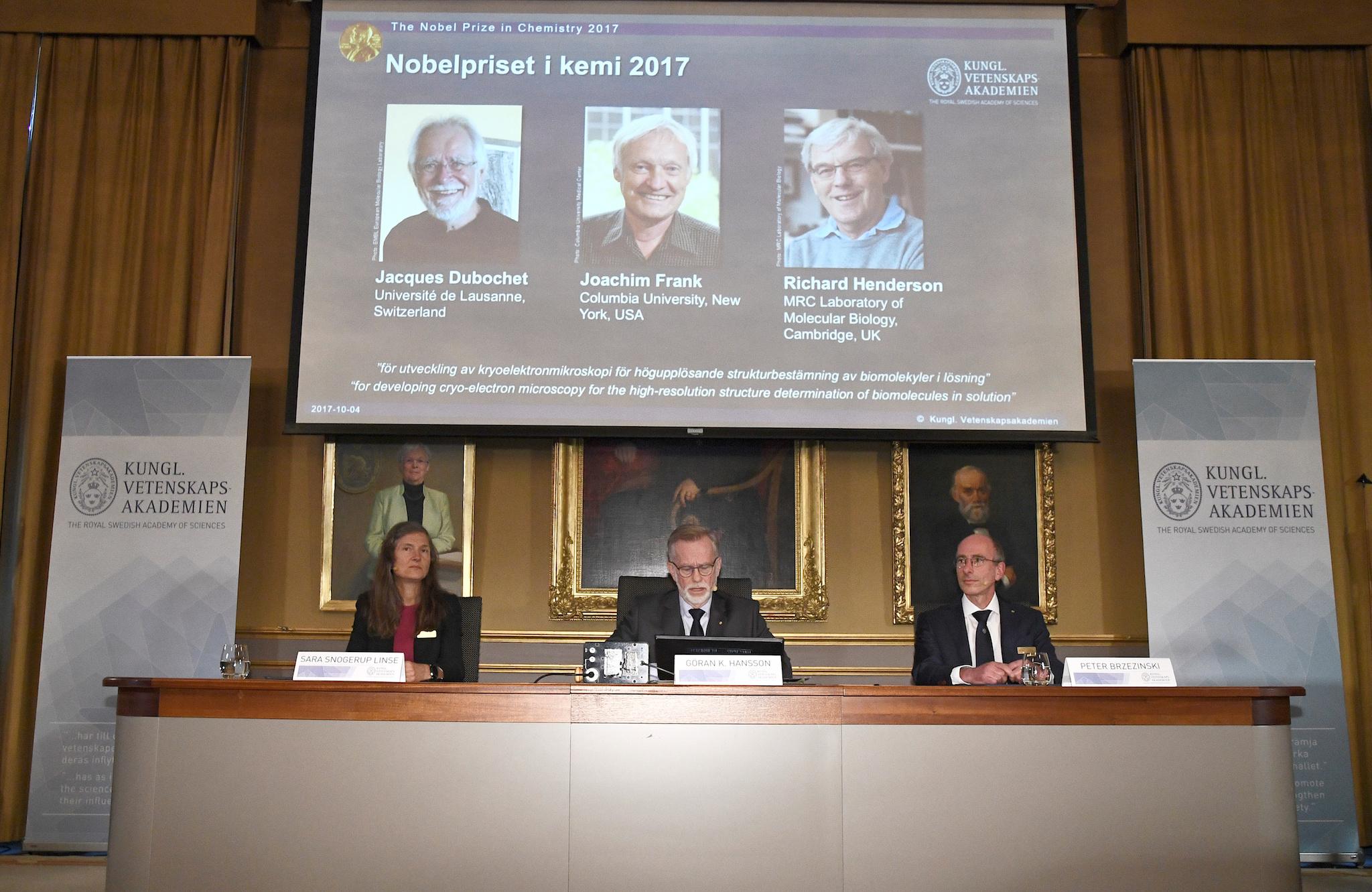Nobel prize in chemistry winners: Scientist take award for developing electron microscopes
The award was as notable for who didn't win as who did

Your support helps us to tell the story
From reproductive rights to climate change to Big Tech, The Independent is on the ground when the story is developing. Whether it's investigating the financials of Elon Musk's pro-Trump PAC or producing our latest documentary, 'The A Word', which shines a light on the American women fighting for reproductive rights, we know how important it is to parse out the facts from the messaging.
At such a critical moment in US history, we need reporters on the ground. Your donation allows us to keep sending journalists to speak to both sides of the story.
The Independent is trusted by Americans across the entire political spectrum. And unlike many other quality news outlets, we choose not to lock Americans out of our reporting and analysis with paywalls. We believe quality journalism should be available to everyone, paid for by those who can afford it.
Your support makes all the difference.The Nobel Prize in chemistry has been given to three scientists who developed electron microscopes.
The winners – Jacques Dubochet, Joachim Frank and Richard Henderson – allowed people to see tiny things in incredible detail, allowing for pictures of some of the most fundamental parts of life.
Until the scientists did their work, it was thought it was only possible to use electron microscopes to view dead things, because the powerful beam used destroys living material. But it was this problem that the researchers helped overcome, allowing scientists to fill in gaps in their understanding of how molecules worked.
The Swedish Royal Academy of Sciences said their method, called cryo-electron microscopy, allows researchers to “freeze biomolecules” mid-movement and visualise processes never previously seen.
The development “is decisive for both the basic understanding of life’s chemistry and for the development of pharmaceuticals”, the academy said.
Scottish-born scientist Mr Henderson used an electron microscope to generate a three-dimensional image of a protein at an atomic resolution, showing the potential of the technology.
His breakthrough was further developed by German-born scientist Frank while Mr Dubochet of Switzerland used rapidly frozen water to preserve the natural shape of the biomolecules.
Chemistry is the third of this year’s Nobel Prizes after the winners of the medicine and physics prizes were announced earlier this week.
The prizes are named after Alfred Nobel, the inventor of dynamite, and have been awarded since 1901 for achievements in science, literature and peace, in accordance with his will.
While the chemistry award has sometimes been overshadowed by the towering reputations of physics winners such as Albert Einstein, laureates include ground-breaking scientists such as radioactivity pioneers Ernest Rutherford and Marie Curie, though she also won the physics prize.
The award passed over one of the highest-profile fields of research, the so-called CRISPR-Cas9 gene editing technology that earlier this year allowed US scientists to alter genes in a human embryo to correct a disease-causing mutation.
Join our commenting forum
Join thought-provoking conversations, follow other Independent readers and see their replies
Comments